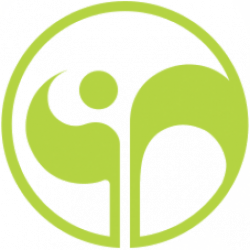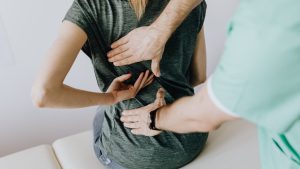What is Osteopathy?
Osteopathy was discovered in the 19th century by Dr. Andrew Taylor Still in Kirksville, Missouri (USA). Osteopathy is now a worldwide method but still depends on each country’s health system recognition and “popular” consideration. Osteopathy is a natural and manual medicine that consists of a global comprehension of the body for solving and preventing its tissues’ mobility restrictions. Its goal is to help the body to restore its optimal balance and functions so it can activate its self-healing system. Thanks to precise medical knowledge, the Osteopath will investigate with its examination the cause of the mechanic or visceral pain or problem and will use different manual techniques to reach the different levels of the dysfunction which can be in the articular joints, ligaments, tendons, muscles, fascias, organs, nervous system, circulatory system or cerebrospinal fluid.
Osteopathy works on four principles:
The body unity: the person is inseparable and is made of a functional unity and identity. All the different parts of the body are linked to each other and a dysfunction somewhere can create a local or further consequence in the body.
The structure rules the function: the mechanic body needs to keep its normal health to maintain the good function of the tissues and organs connected with it (for example a pelvis blockage can create a colon problem).
Free blood circulation and nervous information are necessary for the body to continue to nourish and coordinate its different functions.
The body has its own regulation mechanisms: the body can heal, and maintain itself. When the level of stress is too much and the body cannot solve it, so this is when Osteopathy will take action.
In brief, to give a simple picture, Osteopathy could be compared to repairing a car or a washing machine. To be able to work properly, they both need to have good healthy functions like good filters (kidneys), an engine (heart), electricity (nervous system), a good plumbing with clean liquids (circulatory system). If all those functions work properly, the system is healthy and independent, then the car/machine can work unless there is a problem with the mechanic carrying out the repair. The Osteopath will therefore choose the appropriate technique (tool) corresponding to the level of dysfunction and “part” causing the problem (organ or structure of the body).
Osteopathy for who and what?
Osteopathy is for all ages and all health conditions
In prevention: Once or twice a year you can visit an Osteopath even if you don’t have an obvious pain or problem because (s)he will detect any weakness in your system and avoid them turning into an injury, pain, or visceral disorder. Emotional or injury trauma can leave scars on the body without the person being conscious of it. Osteopathy is also useful during growth and sports training.
Feminine life: Osteopathy can help a woman during her menstrual life. When menstrual is painful, and irregular, causing back pain, digestive problems, migraines, and cystitis. It can help too in adapting and accepting contraception, regulating hormonal fluctuation, fertility problems and later balancing menopause disorders.
Pregnancy: Osteopathy can help the future mother during her pregnancy while she undergoes strong mechanical and hormonal modifications. This can create back or coccyx pains, symphysis pubis disorder (SPD), sciatica, digestive problems (reflux, constipation, nausea…), and circulatory problems(hemorrhoids, heavy legs, headaches). It can also be useful in helping the baby’s position too high or low in the tummy or in breach position. The mother may also require Osteopathy help to recover after delivery or in case of lactation difficulties.
Pediatrics: Osteopathy can treat babies and all children. The birth is not easy and the baby can suffer from the delivery and birth. You can bring your baby from an early age for digestive problems (reflux, constipation, bowels pains), sleep and mood problems, respiratory problems, morphologic issues (torticollis, skull, foot or hip malformation, stiffness…), breastfeeding issues, otitis, rhinitis. Older children can be treated for the same disorders in their different growth changes and life steps ( like school changes, learning disorders, glasses, braces)
Sport: Depending on the sport, the mechanical effort of the body will be different. The osteopath will detect the restrictions of mobility caused by a long and repetitive effort or injury consequences left in the body (tear, tendonitis, fracture, sprain). It will prevent further damage and strengthen the body for further sportive activity. It is also useful for young children involved from an early age in physical team sports to help their body to adapt along with their growth.
Disabled: (post-traumatic, prosthesis, Down syndrome, autism…)
Elders: as the body and vital functions slow down, Osteopathy is useful for older people to maintain their full range of mobility and therefore their tonicity and vitality. For example, to recover from a viral infection or to readjust after cataract surgery.
The Osteopathy appointment:
An appointment lasts one hour. For the first appointment, you will be asked for your complete life health history. This helps the practitioner to prepare the hypotheses which could explain your reason for the consultation. The Osteopath tries to make a “differential diagnosis” from what you tell him(her) to direct you to the best way if you needed further medical investigation. (S)he will be able to be in contact with your physiotherapist, GP, or any other medical specialist. You can also bring your medical documents with you to help the osteopath to understand better the situation (X-ray, scan, ultrasound, blood test, medication list). You may be asked you to remove some clothing for the Osteopath to get further information about your posture. Then, the Osteopath will start to examine you with Their hands to determine where your pain is coming from. To correct those dysfunctions, (s)he will then use different techniques from the high velocity and low range motion to reach your joint level (the famous “crack”), to tissular, organic techniques, to the most delicate techniques reflecting the involuntary movements of the body ( craniosacral and cerebrospinal fluid, autonomous nervous system and embryologic motilities). S(h)e will always ask you in advance if you wish to receive a manipulation. If it is necessary, you will be asked to come back to continue the work after two, three weeks, or maybe more. This will depend on the origin of your problem. The Osteopath’s goal is to deeply reach the cause of your problem, so your body will need this time to process and integrate the treatment received. Three weeks are usually necessary to reset another health state (blood renewal time) and before resuming another treatment. As the person is inseparable from its living environment, some Osteopaths will also consider different parts of your life as your nutrition, medication, your emotions, and genetic influences.
Aurélie the Osteopath is also trained in Clinic Psychosomatic which associates the meaning of your physical pains with your emotional or transgenerational meaning if needed. This can be added as a conversation like “verbal keys” during the osteopathic treatment. To reach a deeper and cellular level, Aurélie is also trained in the Total Reset Method ( or Naet method) to treat allergies, intolerances, hypersensitivities, and hormonal, blood, immune, and emotional disorders. When it is needed because the dysfunction could be too deep, the Total Reset Method can be added to Osteopathy from a second appointment.
Provider: Aurélie Weinberg


